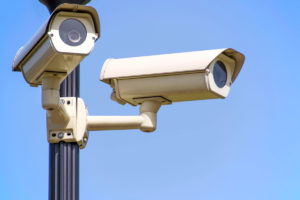Do you ever wonder how it happens? You conduct inventory in your store, you get the results and you find out you have SHORTAGE! How did that happen? Where did all that merchandise go? In Loss Prevention we generally recognize five areas that are the cause of retail shrinkage, shoplifting, employee theft, vendor or supplier fraud and administrative losses.While the cause of shortage may vary depending on the type of retail store you own. The Global Retail Theft Barometer Report for 2014/2015 provides an overall picture for North American Retailers. Shoplifting was reported to account for approximately 36% of shortage, Dishonest Employees caused 45%, Administrative and non-crime losses 13% and vendor fraud 6% (page 53). For store owners this means that in some manner, a Checkpoint Security System can make an impact on all four areas that cause shortage for a store. I am not saying 100% of losses can be prevented by retail theft prevention, but a significant amount of it can be stopped.
When I am talking about a Checkpoint Security System, I am referring to the electronic article surveillance (EAS) pedestals, Checkpoint tags, deactivation units and detachment keys. Pedestals are the towers you frequently see at the doors of many stores. Tags may be soft, adhesive style labels that stick to merchandise or hard, two-piece designs that are pinned to products. Often hard tags are used to protect softlines goods, clothes, bedding, towels, etc. and can be reused many times over. Each tag design is compatible with EAS pedestals so that protected merchandise carried too close to a tower will prompt the alarms in the tower to activate. When employees hear the alarm they react and conduct receipt checks, verifying which items are paid for and which are not. The customer is provided an opportunity to pay for merchandise or return it. In some situations shoplifters toss the item they were planning to steal when the alarm sounds and they run off.
It is clear then how a Retail Theft Prevention System can deter and prevent shoplifting, most thieves don’t want to take a chance of being caught when an alarm sounds. This means you can automatically impact 36% of our losses. But what about Administrative and non-crime losses? How can the use of Checkpoint tags make a difference in this area? Non-crime losses may include merchandise that is left in a shopping cart and missed during the checkout process. A customer loads their goods into the car and picks up the bag of dog food on the bottom rack of the cart. If the cashier wasn’t paying attention the merchandise was missed but the customer doesn’t always know it. While the missed bag of pet food was an accident, it is still a loss and creates stock shortage. By placing a soft Checkpoint tag on the bag the store would have caused a situation that activated the pedestal alarm and an employee would have caught the error during a receipt check.
Vendor fraud only accounts for about 6% of merchandise losses however even this can be improved upon when a Checkpoint Security System is in place. The majority of vendors are honest but there are some who will conduct a store visit to service their merchandise and in the process steal some of their product line. Stores I have worked in have had cosmetic, sunglasses, ball card and jewelry vendors in addition to food and greeting card vendors who regularly made visits. Though they were supposed to sign in and out and speak to a manager before leaving the store it did not always happen. Making sure all of your products are protected with Checkpoint tags ensures that a dishonest vendor who may be stealing will cause an EAS tower alarm and merchandise will be recovered. You can then partner with the vendor’s company to request a different representative service your store in the future.
Employee theft accounts for the final 45% of shortage and can be one of the more difficult areas to stop because of the various methods of theft available to employees. Dishonest team members can underring and pass merchandise, create fraudulent returns, steal cash, hide merchandise, etc., making it more challenging to identify their activity. A Checkpoint Security System can detect those staff members who do try to conceal product and walk out without paying. Remember that any reduction in shortage still adds to the profit line of the store and there are methods to deter, prevent and detect those types of employee theft that a security system cannot detect.
Retail Theft Prevention programs that include Checkpoint tags and hardware can impact all areas that cause shortage. Don’t wring your hands wondering where your merchandise went, invest in a Checkpoint Security System and make a difference starting today!
Get more information on Checkpoint Security Systems, contact us or call 1.770.426.0547 today.

 Wal-Mart has a unique way to cut down on shoplifting
Wal-Mart has a unique way to cut down on shoplifting Would you knowingly buy a car with a defective engine? Of course not! So why would you hire a “defective employee”?
Would you knowingly buy a car with a defective engine? Of course not! So why would you hire a “defective employee”? Daylight savings time is over and for most of us in the U.S. (yes, there are a few exceptions) we have moved our clocks and groaned at the loss of a precious hour of sleep. We have to adjust and get used to the change and eventually we do. For our personal lives there isn’t a lot of impact, once we are used to it we do benefit from the additional daylight and get to enjoy more outdoor activity. The time change is useful as a reminder for changing batteries in smoke detectors. You may even use it as a point when you will start planning your summer vacations. For business owners daylight savings time can be a reminder that it is time to conduct a store physical security review. Time changes may not impact us much individually but for retailers there is an impact for the building, employees and your customers.
Daylight savings time is over and for most of us in the U.S. (yes, there are a few exceptions) we have moved our clocks and groaned at the loss of a precious hour of sleep. We have to adjust and get used to the change and eventually we do. For our personal lives there isn’t a lot of impact, once we are used to it we do benefit from the additional daylight and get to enjoy more outdoor activity. The time change is useful as a reminder for changing batteries in smoke detectors. You may even use it as a point when you will start planning your summer vacations. For business owners daylight savings time can be a reminder that it is time to conduct a store physical security review. Time changes may not impact us much individually but for retailers there is an impact for the building, employees and your customers. When do closed circuit television malfunctions occur? I’m sure you can guess, it is always at the point when you need it most. I can’t recall the number of instances when I had a cash shortage I needed to look for and when I attempted to pull video through the DVR the video was already dropped or the camera wasn’t functioning. I remember having to look for an image of a suspect in a shoplifting incident and the picture was too grainy to be of any use due to a dirty camera lens or dome. One slightly embarrassing situation that stands out in my mind involved robberies that were taking place behind our store. I had developed a great working relationship with our local police department and they knew the quality of our camera system. Investigators came to me seeking assistance with outdoor camera footage to try to identify the criminals conducting the robberies. I pulled up video of the date and time in question and much to my chagrin the camera had a great shot of the ground directly underneath it. A power surge had impacted the programming of the pan/tilt/zoom (PTZ) camera and placed it in a default position. I had not noticed the problem in a timely fashion and could not recall how long it was before I did catch the issue. The good news was I was able to re-program the camera and eventually we did provide footage of an incident a little later that led to an arrest.
When do closed circuit television malfunctions occur? I’m sure you can guess, it is always at the point when you need it most. I can’t recall the number of instances when I had a cash shortage I needed to look for and when I attempted to pull video through the DVR the video was already dropped or the camera wasn’t functioning. I remember having to look for an image of a suspect in a shoplifting incident and the picture was too grainy to be of any use due to a dirty camera lens or dome. One slightly embarrassing situation that stands out in my mind involved robberies that were taking place behind our store. I had developed a great working relationship with our local police department and they knew the quality of our camera system. Investigators came to me seeking assistance with outdoor camera footage to try to identify the criminals conducting the robberies. I pulled up video of the date and time in question and much to my chagrin the camera had a great shot of the ground directly underneath it. A power surge had impacted the programming of the pan/tilt/zoom (PTZ) camera and placed it in a default position. I had not noticed the problem in a timely fashion and could not recall how long it was before I did catch the issue. The good news was I was able to re-program the camera and eventually we did provide footage of an incident a little later that led to an arrest. When I was a Loss Prevention Manager we would catch a shoplifter or a dishonest employee and recover merchandise. Depending on the type of case we would sometimes hold the evidence for a few days until the court hearing other times it could be much longer. If a shoplifter refused to plead guilty or requested a jury trial cases could be held up for months if not longer. I had several cases that went on for more than a year. Felony shoplifting cases and juvenile cases in our jurisdiction often meant lengthy wait periods depending on caseloads in the court. I also recall at least one shoplifting case in which the lawyer for the defendant requested extensions three separate times hoping that I would not appear for the hearing and the case would be dropped. No dice, I showed up for each hearing and finally the lawyer entered a guilty plea. The problem with the lengthy cases was that we would have to hold the evidence until the cases were settled. In some situations the police department held the recovered merchandise, such as when they stopped the suspect after the suspect fled the store. When merchandise has to be held for long periods it is possible for it to sit in evidence and be forgotten about. For stores that are too small to have security or Loss Prevention Departments management may be storing that evidence and no one is thinking about following up on cases with their police department or court.
When I was a Loss Prevention Manager we would catch a shoplifter or a dishonest employee and recover merchandise. Depending on the type of case we would sometimes hold the evidence for a few days until the court hearing other times it could be much longer. If a shoplifter refused to plead guilty or requested a jury trial cases could be held up for months if not longer. I had several cases that went on for more than a year. Felony shoplifting cases and juvenile cases in our jurisdiction often meant lengthy wait periods depending on caseloads in the court. I also recall at least one shoplifting case in which the lawyer for the defendant requested extensions three separate times hoping that I would not appear for the hearing and the case would be dropped. No dice, I showed up for each hearing and finally the lawyer entered a guilty plea. The problem with the lengthy cases was that we would have to hold the evidence until the cases were settled. In some situations the police department held the recovered merchandise, such as when they stopped the suspect after the suspect fled the store. When merchandise has to be held for long periods it is possible for it to sit in evidence and be forgotten about. For stores that are too small to have security or Loss Prevention Departments management may be storing that evidence and no one is thinking about following up on cases with their police department or court.

